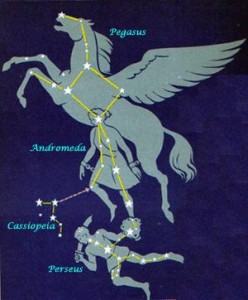The constellations tell a great part about the history of science and myth, holding astronomers in high value as hobbyists and people who observe atmosphere beyond our Earth. The stars create some of my favorite constellations. Those which aren’t confused by as satellites and debris in the sky are watched by anyone who appreciates the beauty in star giants and anomalies, like the asteroids, black holes, galaxies and other cosmic lights that make use of telescopes and pairs of keen eyes.

As a constellation in the southern hemisphere, Libra is part of the 12 zodiac signs associated with astrology. Dating back to the Babylonians, the star group revived in Roman myth as a balance of justice. The constellation is the only zodiac not associated as an inanimate object, but rather by balancing pans. On the autumn equinox, September 27, Libra can be viewed completely in line with the sun and the equator.

Pegasus is a really exciting constellation, the horse of Zeus and Greek mythology. However hard to spot, it can be found by following the lines of the big dipper to the Andromeda galaxy. The star cluster is in the northern hemisphere, and can be spotted best during October and November. The square made by the body of the horse is best used by astronomers to determine how clear the sky is. When you can see stars all throughout the middle, the sky is clear, but in lighted areas and cities spotting more than several can by tough.

Orion is a relatively easy constellation to spot with the bright stars Betelgeuse and Rigel on either opposite side, characterized by the belt of the legendary Greek hunter Orion. As three stars shaped like a bow, Orion’s belt is located on the celestial equator, and can be visible at almost any part of the year but prevalently in August, with its position above the horizon 11 hours a day. In the winter, Orion’s position is toward the South. The constellation is consistently used as a focus point for finding other geometric stars.

NASA sets an astronomy picture of the day daily at apod.nasa.gov, and their findings show great anomalies of the solar system. This Tuesday, November 8, NASA will track an asteroid called 2005 YU55. With a quarter mile width, the rock will pass by earth as close as 85% of the distance from the Earth to the moon.
Whether you’re an outdoors enthusiast or not, an astronomer or a hobbyist, you will enjoy mapping out the stars. The possibilities are endless. Star charts can be purchased from any Barnes and Noble or book store, Amazon, as well as any astronomy publication. These charts make great time and invoke a lot of interesting pictures. If you’ve not got the time, you can buy a mobile app such as Sky View or Star walk, each of which adds a character to the constellations and helps even more to locate them.




















